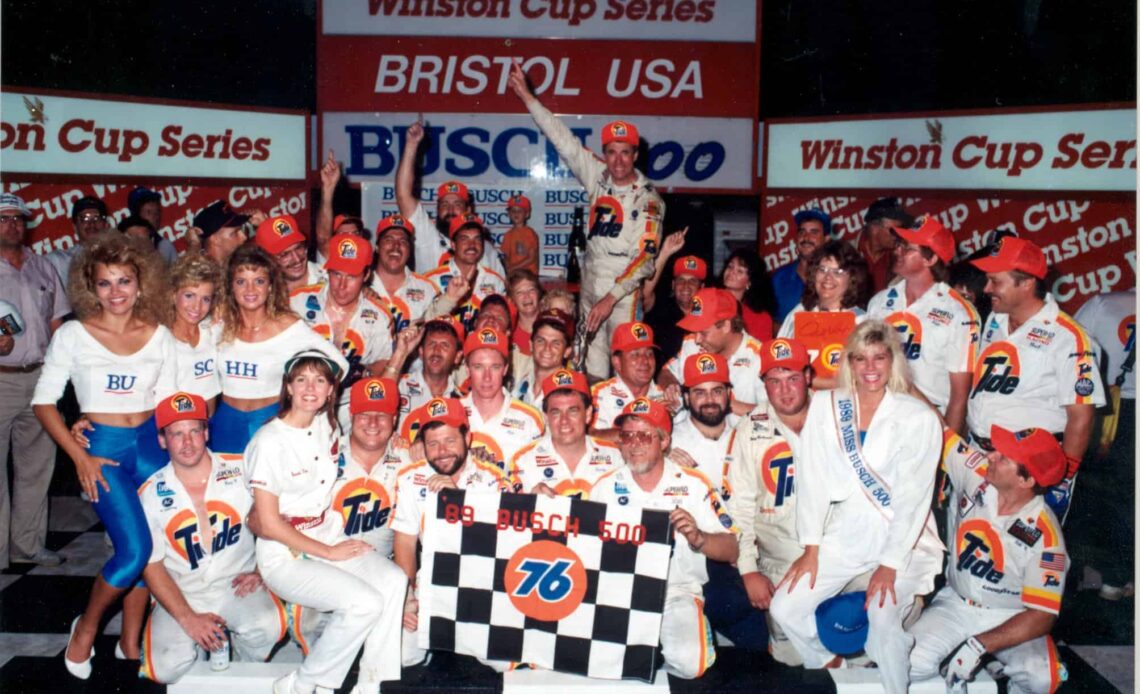It’s Bristol, baby!
NASCAR rolls into Bristol Motor Speedway this weekend for the first of two trips to the half-mile bullring in the Tennessee hills. After a couple of years on a temporary dirt surface, the race returns to the track’s high-banked concrete edition for the 124th time this spring.
The NASCAR Cup Series has raced at Bristol since 1961, and over that time, several drivers have made names for themselves as masters of the track. The winningest driver of all time at Bristol is Darrell Waltrip with 12 victories. Among active drivers, Kyle Busch rules the roost with eight.
Bristol is a great example of why comparing drivers straight-up across time is, at best, an exercise in frustration. Not only have the cars changed across the years, but so has the track. Waltrip’s success came on asphalt, Busch’s on concrete, but those aren’t the only ways the track has changed over the years.
Bristol’s first iteration was as an asphalt oval with 27 degrees of banking in the corners. Its first eight seasons used this surface, before a 1969 repave switched to a slightly higher banking in hopes of raising speeds. The track was repaved several times over the years before switching to concrete for the 1993 season, as the Tennessee winters proved to make the asphalt difficult to maintain. Then in 2007, it was reconfigured to the current setup, with graduated banking from 24-28 degrees. NASCAR ran three dirt races at Bristol from 2021-23.
While Waltrip is the undisputed Bristol king, who ruled the roost on the track’s different variations? That’s worth looking at, because it reveals some trends and illustrates the need to look beyond the numbers when looking at the sport’s past.
1961-69 Race I: Fred Lorenzen & David Pearson
Both Fred Lorenzen and David Pearson had three wins on Bristol’s O.G. surface. Pearson won two more on the track after the mid-’69 repave. For both drivers, a look at their Bristol races over that period reveals the nature of the sport at the time — attrition played a major role in deciding races. The cars had to hold up to the beating.
And even for the best of their era, they didn’t always do that.
It was feast or famine for Lorenzen and Pearson. All of Lorenzen’s wins came before the 1969 changes; he only raced at the track once afterward. In all of his Bristol starts, Lorenzen either finished in the top two or didn’t finish at all. A couple of his six pre-repave DNFs were…
Click Here to Read the Full Original Article at …

